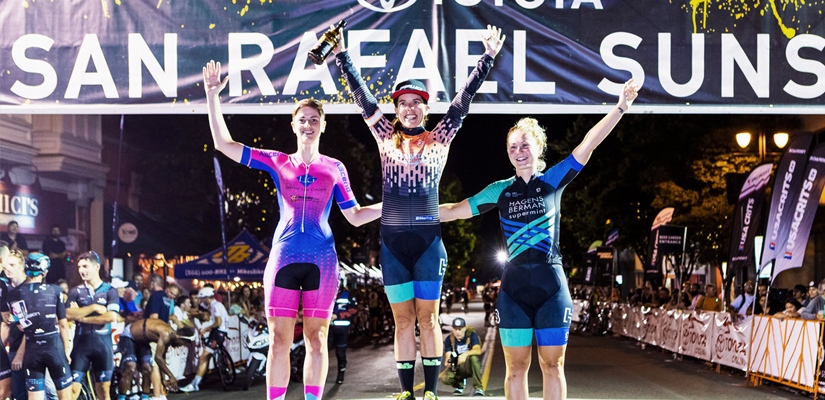How to Pick the Best Races for Upgrading

You can upgrade race categories faster by filling your season with high quality events that suit your abilities and make the most of your time. Picking the right races is easy to do and can make a huge difference when you are aiming to upgrade quickly.
For more on race tactics check out our Race Analysis YouTube Playlist.
How it Works: USAC Point Structure
Before we get into the best strategies for choosing races, let’s take a look at USA Cycling’s upgrade structure. If you are not racing in the USA, become familiar with the upgrade system in your local area.
Upgrades are earned by accumulating points in sanctioned races in your current race category. The functionality of the point structure is an important thing to keep in mind when you plan your season and choose your races. Here is a basic breakdown of the upgrade point system:
- Novice to Cat 4 requires ten mass starts (one point for each finish) for an automatic upgrade, but athletes can also upgrade at will using their own discretion.
- Cat 4 to Cat 3 requires 20 upgrade points in 36 months.
- Cat 3 to Cat 2 requires 30 upgrade points in 36 months.
- Cat 2 to Cat 1 requires 35 upgrade points in 36 months.
Your finishing position in a USAC sanctioned race determines how many points you earn. These points will vary depending on how many athletes in your category start the race and what type of race you are doing. While all mass start events award points, time trials do not.
For an in-depth breakdown of the point system (Updated with the newest rules) and the requirements for upgrading categories go ahead and check out this article: From Cat 5 to Cat 1: How USAC Road Upgrades Work
Set Your Upgrade Goal
Start things off by setting an upgrade goal. Whether you’d like to make the final leap to Cat 1, get your first upgrade under your belt, or take on multiple upgrades in one season, a clear and concise goal can help keep you on track.
While it’s great to pick a challenging goal, it’s also important to consider any restrictions that your abilities, lifestyle, or schedule might present this season. Setting a goal that is unrealistic for your skills or incongruent with your lifestyle is not only impractical but can ultimately be discouraging or frustrating as the season progresses. Choose a challenging but attainable goal.
Identify Your Strengths
With a goal set and potential races in mind, identify your personal strengths as a cyclist and athlete. You can use your strengths to decide which courses and styles of racing work best for you and increase your likelihood of a good race finish.
If you are new to racing and aren’t sure what your strengths are as a racer, use your personal experience with training and any racing you’ve done to outline your strengths. What kind of racing excites you? Do you prefer long sustained efforts or short punchy climbs? When training indoors have you noticed a predisposition to a particular power zone? You can use this information to get a feel for the races that favor you.
Choosing Your Events
Now that you’ve stated your goal and outlined your strengths it’s time to choose the best events for you. The goal in doing this is to refine your selection and choose races that offer you the experience and opportunity needed to upgrade.
When you decide whether or not an event is a good addition to your season consider these variables:
What is the Course like?
Look for races with courses that favor your physical abilities. You are more likely to perform well on a course that reinforces your confidence and gives you opportunities to use your strengths. Courses that you find fun and make you excited to race are also a great addition to any race plan.
What is the Field Size?
Field size has a big impact on the number of points an athlete can earn in any given race. More riders means more points. To get a feel for the potential field size, take a look at results from your current race category in prior years. Remember that the field needs to meet the minimum size requirement in order for you to earn points.
While it might seem like a good idea to seek races with smaller fields, racing in small groups isn’t the best way to get upgrade points fast or gain the experience needed to race in higher categories. Racing in a bigger field awards more points throughout the field and offers more opportunity to gain race experience.
With that said, if you are targeting a high profile event there is likely to be a large field with a surplus of strong riders. Racing high profile races is great for experience, but depending on your circumstances, the opportunity to grab points might be slimmer. Integrate and weight these races into your race schedule appropriately.
What is the Timing of this Event?
Consider the timing of the event in correspondence to your training and your schedule. Does the event timing and your expectations for the event align with your goals? Does it work well with the other races you would like to complete?
Any race you add should also align with your personal schedule. If you have an important life event that might impact your training or prevent you from racing well, evaluate in advance and don’t add events that don’t make sense for you.
Can I Get Points at This Event?
With course, field size and timing in mind, decide whether or not it’s realistic to get points at this event. While it’s impossible to know what’s going to happen on race day, you can generally make a good prediction based off the information you’ve collected.
The Importance of Experience
At the end of the day, it’s important to remember that the experience you gain in a race is as valuable as any amount of points you can earn. A good event will not only play to your strengths but will also challenge your abilities and reinforce your expertise.
Don’t underestimate the value of racing events for the sake of experience. If you are eyeing an event that may not be rewarding when it comes to points but will give you the practice or experience needed to do well in another event then add it! If you like to have casual warm-up races at the beginning of your season for practice, add those! It’s all about being intentional and choosing races that move you closer to achieving your goals.
Increase the Quality of Your Race Schedule
Planning your season around an upgrade is all about increasing the overall quality of your race schedule. You can make the most of your time with high-quality events that give you a true opportunity to test your abilities. Intentional racing like this will not only get you the upgrade points you need but will ultimately make you a faster and smarter racer.
For more cycling training knowledge, listen to the Ask a Cycling Coach — the only podcast dedicated to making you a faster cyclist. New episodes are released weekly.
